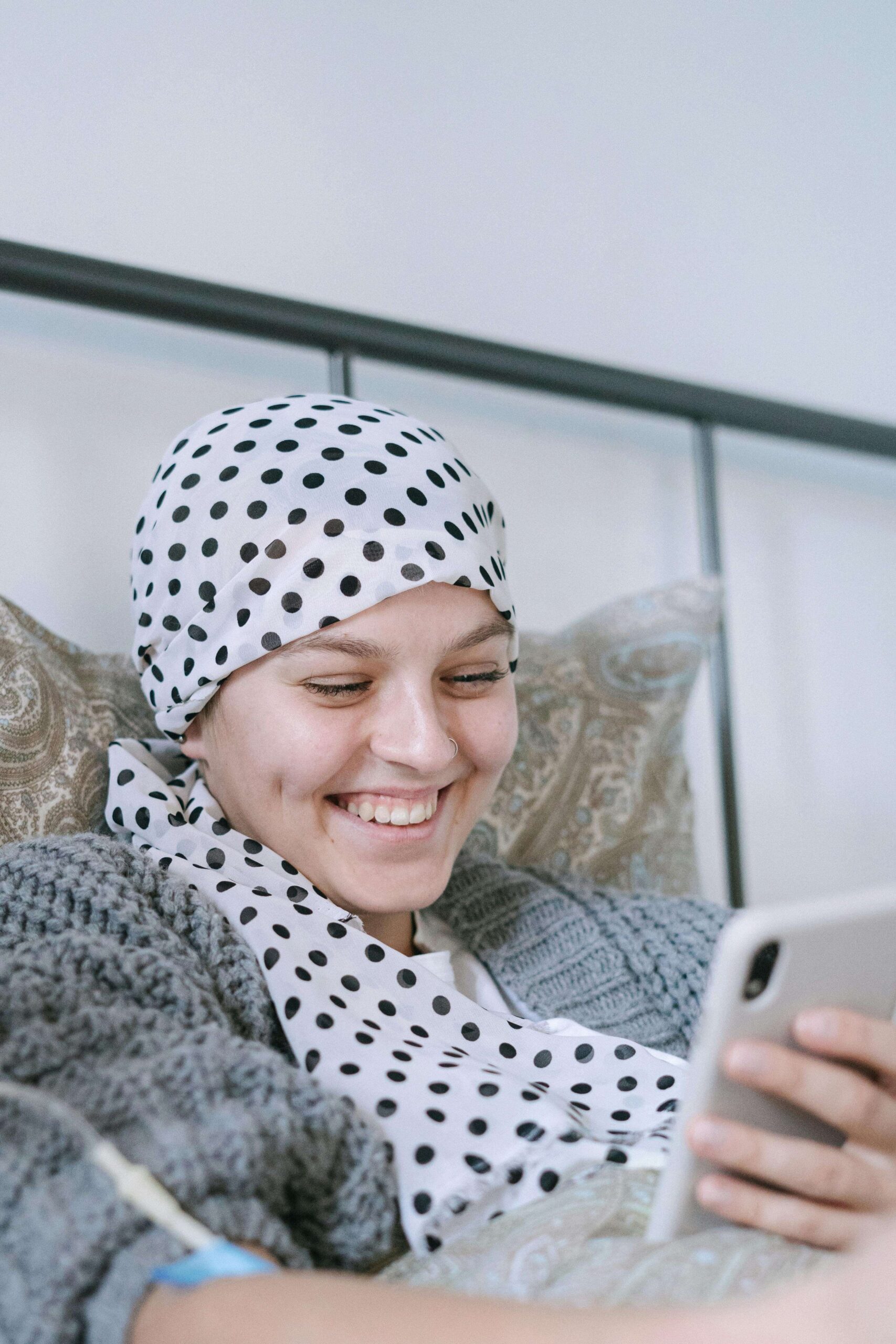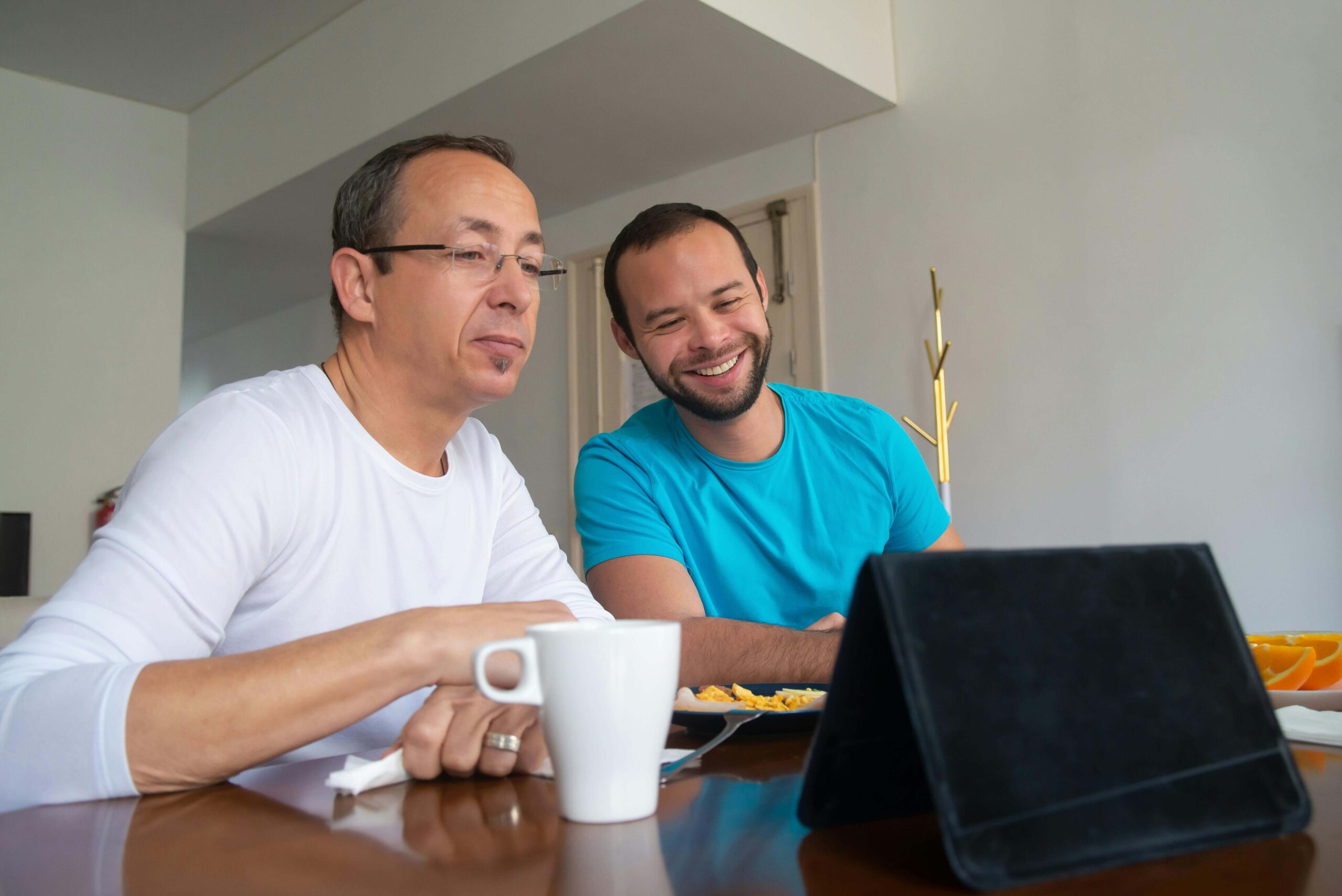Active Living & Supportive Connections

Staying Active & Connected
When you are feeling well, consider exploring new ideas to support your physical, mental, emotional, and social health. Your health condition symptoms, side effects from medications and treatments, and fatigue can be overwhelming and isolating. Try exploring new ways to maintain an active lifestyle within your limitations.
Exploring Ideas for Active Living & Supportive Connections
Cognitive Activities
- Find a career or take a course that challenges you mentally.
- Engage in regular reading. Choose books that challenge your thinking or introduce new ideas.
- Use brain enhancers such as word games, puzzles, crosswords, Sudoku, and memory challenges.
- Avoid brain draining activities such as scrolling the internet and excessive screen watching.
- Learn a new language or how to play a musical instrument.
- Aim for 7-9 hours of sleep per night. Sleep is crucial for memory, learning, and cognitive functioning.
Physical Activities
- Consult your physician for guidance before starting any new exercise program.
- See a physiotherapist to create a plan if you have chronic pain or mobility concerns from your condition or treatments.
- Incorporate daily exercise into your routine, such as exercise classes, walking or hiking, cycling, gym workouts, stretching, Pilates, yoga, Tai Chi or Qi Gong.
- Learn ways to modify exercises (such as chair yoga), even if just for a short time.
- Explore recreation or community centres for low-cost programs.
- Explore outdoor activities, nature walks, and relaxing scenery to reduce stress.
- Explore opportunities for travelling that provide physical activity and accommodations for your health challenges.
Social Activities
- Think about the times of day you want to be social versus when you want alone time.
- Maintain your social connections to people through face-to-face visits, phone calls, video calls, texts and emails.
- Engage in small group activities that interest you such as crafts, pottery, art, cooking, music, educational courses, and others. Make a list of activities you are interested in trying.
- Focus on healthy relationships with people who accept you and make you feel good about yourself.
- Explore options for travel opportunities that meet your current social desires.
- Explore support groups to connect with others who share similar experiences. Learn about support groups in the resource kit.
- Consider volunteering as it offers the opportunity to connect with others who share similar interests.
- Reflect on your need for personal boundaries and your need for privacy and confidentiality as you explore new social connections and relationships.
Tip
Reflect on your day to day. Think and talk to others about ways to maintain or improve your physical and social activity. Check out the ideas in the resource kit.
“As a person who worked for years in the community, I saw first-hand the benefits of staying physically, mentally, and socially active for people of all ages. Community centres, recreation programs, outdoor clubs – even friends that meet for coffee or a walk, all offer connections and engagement that we as human beings need. I see programs being led by volunteers, another great way to stay active and engaged. I think we should revisit our day to day plans and activities, set goals for ourselves, and be as active as we can for our health and our quality of life. Having supported three relatives through physical and mental health challenges, I witnessed the importance of using tools and activities to help you learn, discuss, and record your needs and decisions.”
Nutrition & Meal Support

Getting Dietary Guidance
Health conditions, physical changes, medications, and treatments can impact your appetite and ability to prepare meals. Consider your current nutrition needs and when you might need some meal support.
Food Safety
- List all food allergies or food sensitivities that may trigger symptoms in your Health Profile.
- Learn what foods, spices, herbs, or supplements might negatively interact with your medications.
- Post a list of the foods you should avoid on your fridge and keep it updated. Ensure all your care partners and caregivers are aware of the list.
Meal Planning and Preparation
- Describe changes in your appetite and list your preferences for meals, snacks, and beverages.
- List all vitamins, herbs, or supplements you are taking on your medications list in your health profile.
- Consult a dietitian to create a nutrition plan based on your changing dietary needs.
- Learn about holistic nutrition and advances in speciality diets for allergies and autoimmune diseases.
- Create a weekly meal plan and share it with care partners stating how they can help you get groceries or prepare meals.
- Explore grocery shopping and meal support services available in your community.
- Visit the resource kit for suggestions for low-income meal support programs in BC.
- Add your favorite recipes, meal support services, and any food diaries to your Mywell Health print or digital files.
Transportation Options

Health conditions and treatments may impact your ability to drive. Changes to your mode of transportation may be temporary or permanent. Explore what transportation options are available to you in your community.
Assessing Your Health and Driving Ability
Driving offers freedom and independence and losing that ability can be challenging. However, changes in your health or medications may affect your ability to drive safely. You may want to consider having a driving assessment. Perhaps this has been suggested by your family, physician, or you are considering it yourself. Learn more about driving assessments and other transportation options in the resource kit.
Exploring Transportation Options & Services in BC
Travel Assistance Program (TAP)
TAP is a refund program for travelling to specialist appointments, tests, or surgeries outside of your community. If you qualify, you need to get a signed letter and form from your physician or specialist. When you need to use your TAP refund, call the TAP 24 hour information line days before your appointment to get a confirmation number that you write on your form.
Learn how to get a special parking permit (SPARC), even if for a short period of time. A physician or nurse practitioner must complete part of the application. Complete your portion of the form and bring it to the appointment. In some cases, if you are unable to physically get to a visit, the process can be completed online and mailed to you.
Community-Based Ride-Sharing
- Many BC communities have different transportation options depending on your age and need.
- Taxi services can provide wheelchair accessible ride-sharing and usually accept taxi vouchers.
- Volunteer drivers such as Volunteer Cancer Drivers and Wheels of Hope offer rides to and from cancer treatments.
- Volunteer transportation programs provide rides for people with disabilities or special health needs. These services often offer door-to-door rides to medical appointments and social outings.
Learn about HandyDART for yourself or someone you are supporting. Door-to-door ride-sharing services are available for people with physical or cognitive disabilities. Be aware that all ride-share services need to be booked ahead of time.
Visit the resource kit for more information on all these transportation options and more.
Tip
Ask friends, neighbours, and family members to help you get to activities or health visits. Often people want to help but they do not know how. Add your ‘drivers’ to your care partners list including the days and times they are available.
My Daily Activities & Personal Needs

Be honest about your capabilities and limitations and know when to ask for help. Some changes in your daily activities (ADLs) may be temporary, while others may be permanent. Start by identifying where you need help, then decide when, how, and from whom to get the help you need.
Meeting Your Daily Needs
- Personal hygiene such as bathing or showering, grooming (including hair care, shaving, and oral hygiene), toileting, skin care, and dressing.
- Meal support including preparing meals, grocery shopping, and kitchen cleaning.
- Moving around, any mobility concerns in your home, such as walking, transferring from sitting to standing, climbing stairs, walking to and from a car and using mobility aids/devices.
- Medication management including filling prescriptions, taking the right dosage of medications at the right times, re-ordering from the physician, and communicating with the pharmacist.
- Managing treatments for your health conditions, including using specialized equipment and medical devices, infusions or injecting medications, ordering medical supplies and equipment, and more.
- Home hygiene chores such as cleaning, laundry, washing dishes, washing bathrooms, and vacuuming.
- Organizing a schedule for caregivers and care partners as needed.
Getting Assistance with Your Personal Care Needs
- Be aware that your personal care needs may change due to worsening symptoms, new side effects, an accident, surgery, or hospitalization.
- Have an agreement in place with your health advocate or care partners on a plan for getting assistance if your needs change.
- Create a personal care plan for your caregivers outlining the care tasks required to meet your needs while considering your privacy and confidentiality expectations and personal boundaries.
- Know that a written plan should help you communicate with multiple caregivers and care partners and give you more control over how and when you want assistance and support.
- Download the Changes in My Personal Needs fillable PDF tool. Complete the checklist with your health advocate or a care partner.
- Learn about home care services that may be available in your community in the resource kit.
Tip
A simple list of daily tasks, preferred timing, and how a person likes each task done can provide peace of mind. If caregivers are involved, this list can be expanded into a personal care plan found in the resource kit.
“Part of living with an invisible health condition is that sometimes it is hard to ask for help. People often ask “How are you doing” and I always say fine. But truly, there are many days when I am not fine. I am exhausted, frustrated, and scared. I know I need to work on trusting others, asking for help, and planning ahead so I have people to ask when I need assistance. I have been hospitalized twice and I might have been able to avoid both times if I had had help at home and started my treatments earlier.”
Managing My Health Condition

Health conditions vary in severity and impact, and people respond to or experience their health conditions, symptoms, and treatments in different ways. Some people experience times when their symptoms worsen or ‘flare’ causing periods of discomfort, feeling very unwell, and/or pain. Following a health care visit, write down the advice you have been given into your health profile notes or personal care plan.
Managing Your Symptoms or Side Effects
- Talk with your physician, nurse practitioner or specialist about when it is appropriate to see them. Know how you can get in touch with them by booking a health visit, phone or email.
- Learn about when it is more appropriate to see other health care professional such as a physiotherapist, occupational therapist, or registered massage therapist.
- Learn about the expanded scope of practice for a pharmacist in BC. Make a list of how your pharmacist might be able to help to manage your symptoms and side effects.
- Revisit your Health Care & Business Professionals list and include how they can assist you.
- Review your Care Partners list to ensure it includes when and how others can help.
Having an Emergency Plan
- Plan ahead for different types of emergencies.
- Know whether to go to a walk-in clinic, urgent care, or a hospital emergency room for different symptoms and health issues.
- Learn about emergency services in your community and how to use them effectively. Know the difference between using 911 for a life-threatening situation and calling 811 for information about your symptoms and concerns.
- If your symptoms can be severe, work with your physician and health advocate to develop a written emergency plan of what to do and who to call in what situation. Post it near your fridge in your kitchen. Keep a copy in your Mywell Health file and update as necessary.
Tracking Your Symptoms
- Track your symptoms in your health calendar in print or on your phone.
- Note significant changes in your daily routine, medications, or treatments that could be impacting the severity of your symptoms. Include any medications or over the counter drugs, vitamins, or herbs you take.
- Describe your symptoms or side effects in detail, such as time of day they occur, how long they last and what treatments, over the counter drugs or remedies you use and with what effect.
- Share any health changes, symptoms or side effects with your physician or specialist.
Tip
If your symptoms or condition is severe – have an emergency plan – who should you call for what? Share it with your care partners and if you choose, post it on the side of your fridge.
Medications & Other Daily Records

Your physician or health care professionals may suggest you keep track of your medications, weight, exercise routine, blood pressure, diet/ nutrition, fluid intake, lab results, pain levels, blood sugar levels or A1C, blood pressure and more. Learn how to use your Mywell health profile, notes pages, health calendar or other phone apps to keep track of these important records.
Keeping Track of Your Health
- Ask your physician what you should check on a daily, weekly, or monthly basis.
- Use a print, phone, or online calendar to make notes of the items you are monitoring.
- Use the ‘notes’ app on your phone to record any new symptoms or changes you are experiencing in your health.
- Try different ‘health’ apps on your phone to track your weight, blood pressure, or sleep. Remember, the information on your phone or an app is not always secure or private.
- Consider using ‘fitness’ apps on your phone or watch to track your steps, fitness, heart rate and more.
Tracking Your Medications
- Check regularly that your medication list and health profile are up-to-date.
- Know that your Medication List is included in your health profile. However, if you choose, you can complete it as a separate PDF tool that may be easier to manage and access. See below.
- Include in your medication list all prescribed medications and any over the counter drugs (OTCs), herbs, vitamins, or supplements you take regularly.
- Review your medication list with your physician, nurse practitioner, or pharmacist every year. Make note of any side effects or negative interactions with other substances such as alcohol or OTC drugs.
- Use pill boxes or blister packs from the pharmacy if you need help organizing your medications and try phone apps and alarms as medication reminders.
- If needed, use a medication record to help you mark off the medications you take each day. Include the name of the medication, dosage, time taken, and any special instructions (such as with or without food). Make note if a person other than yourself gives you the medication.
- Download the Medication & Daily Records fillable PDF tool or create your own. Keep copies in your Mywell Health print and digital files.
Tip
Some people like to use their Health Profile and Medication List seperately. Use what option works best for you, keep them updated and accessible by your phone.








